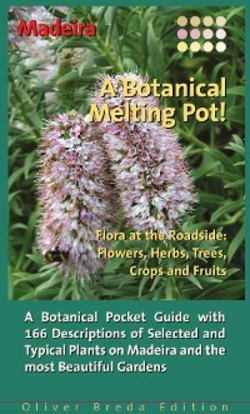Читать книгу Madeira - Susanne Lipps - Страница 11
ОглавлениеIn the Gardens
Madeira’s cognomen “Flower Island” is due to the tropical and subtropical flora that thrives in the gardens and parks and decorates avenues, roadsides and promenades. The cultivated plants were imported from all over the world and impress either with their outstanding flowers or with their conspicuous shape. The less spectacular endemic flora is only scarcely represented in the gardens. Exceptions prove the rule (e. g. the decorative dragon tree, the sumptuous endemic viper’s buglosses, Canary marguerites and Madeira stork’s bills). In the 16th century, Portuguese seafarers began to introduce plants from Africa, Asia and South America to Madeira that had been unknown in Europe until then. They intended to adapt the delicate, tropical species gradually to a chillier climate so that later they would be able to cultivate them outside in Portugal, e.g. in the royal gardens of Lisbon and Sintra. This aim was never achieved because many tropical plants do not tolerate temperatures of only several degrees above zero or lower. Anyway, Madeira’s flora was enriched. In the 18th and 19th century British wine merchants mostly impressed the island, both economically and culturally. They also imported numerous exotic plants. They used to construct villas at more dizzy altitudes of 500-700 m (550-765 yd.) where the climate
is less sultry than in the coastal areas and vied with each other to collect botanical rarities from all continents. They introduced mostly subtropical plants from South Africa, Australia, New Zealand and Japan to Madeira and sometimes from there to England. Many trees and shrubs originate in the more moderate climate zones of North America and thrive in gardens at higher altitudes.
Today both public authorities and private people continue the traditional garden culture. Every roadside and every traffic island is carefully planted with Oleander, Sword Aloe, Agapanthus and Hydrangea. All plants flower at different times of the year. Thus the visitor always feels like being “on a swimming garden in the middle of the Atlantic”. Every garden, whether big or small, is well tended by its owner. The most beautiful plantings are valued with prices and honours in all villages. Many ornamental plants that are also known in Central and West Europe nowadays, are decorating kitchen gardens (e.g. fuchsias, freesias, geraniums and petunias). A multitude of gardeners is continually working for the care and the (re)planting of plants in the big parks that are open to the public. Mostly at these sites people fond of botany will find magnificent trees, shrubs and flowering plants from tropical and subtropical countries.
11
